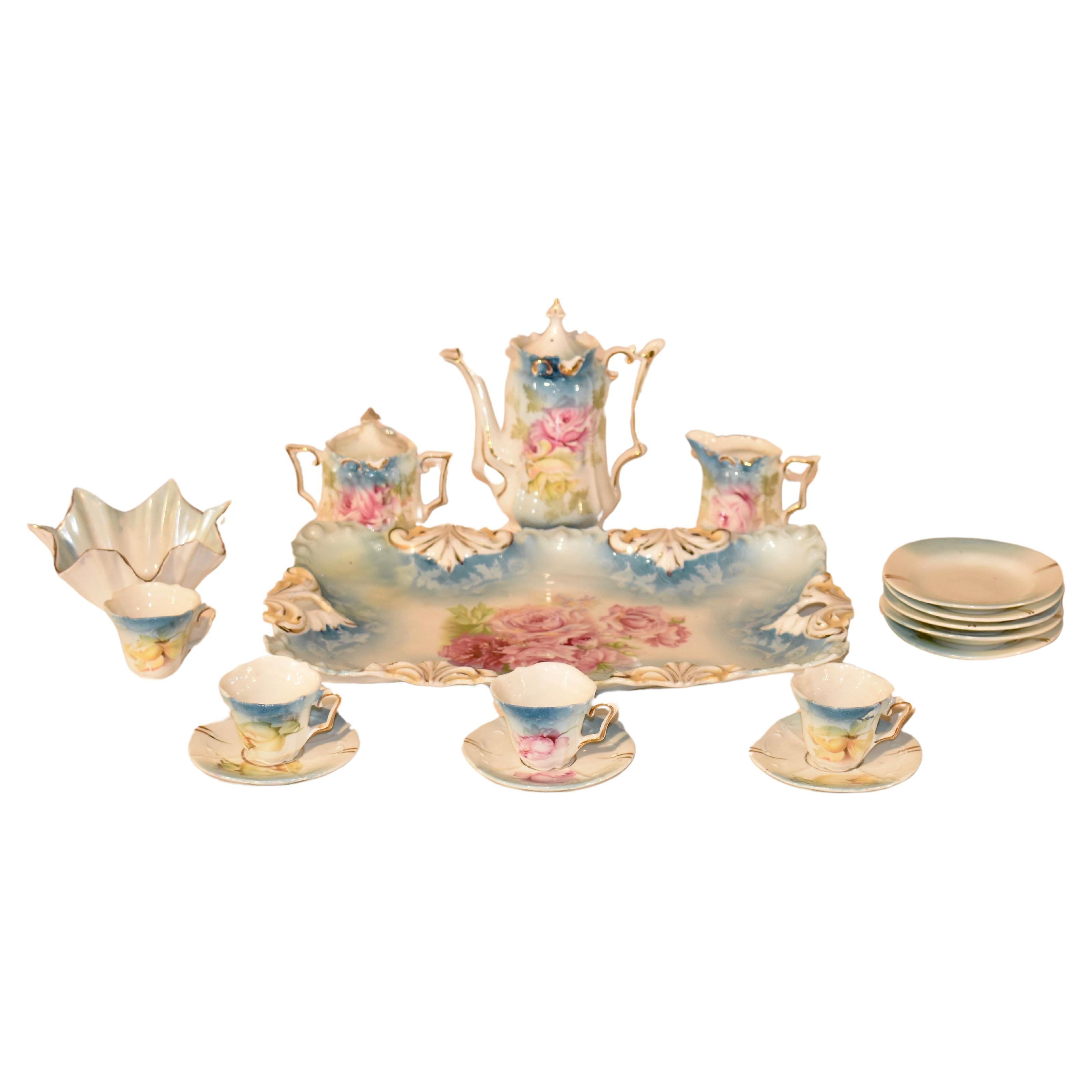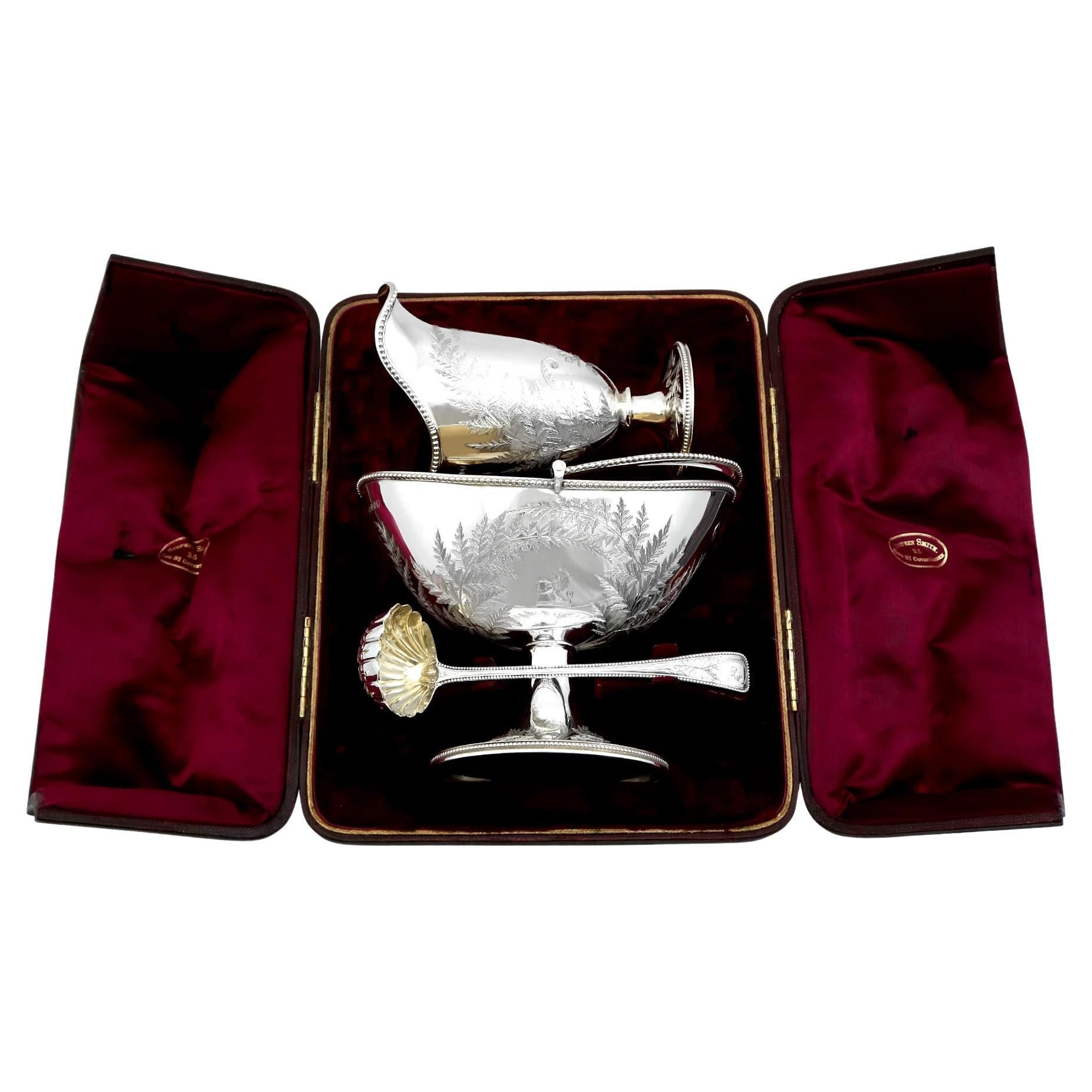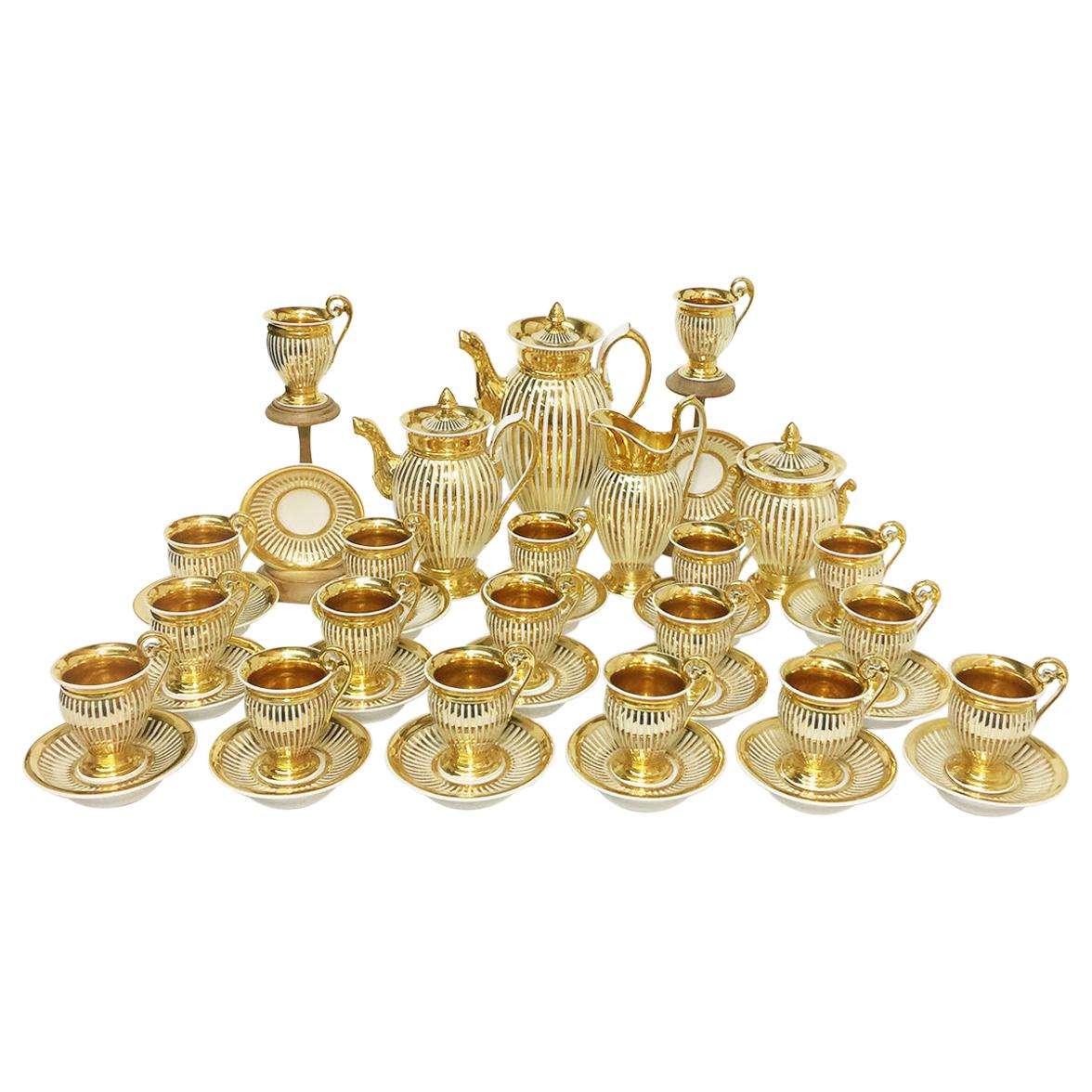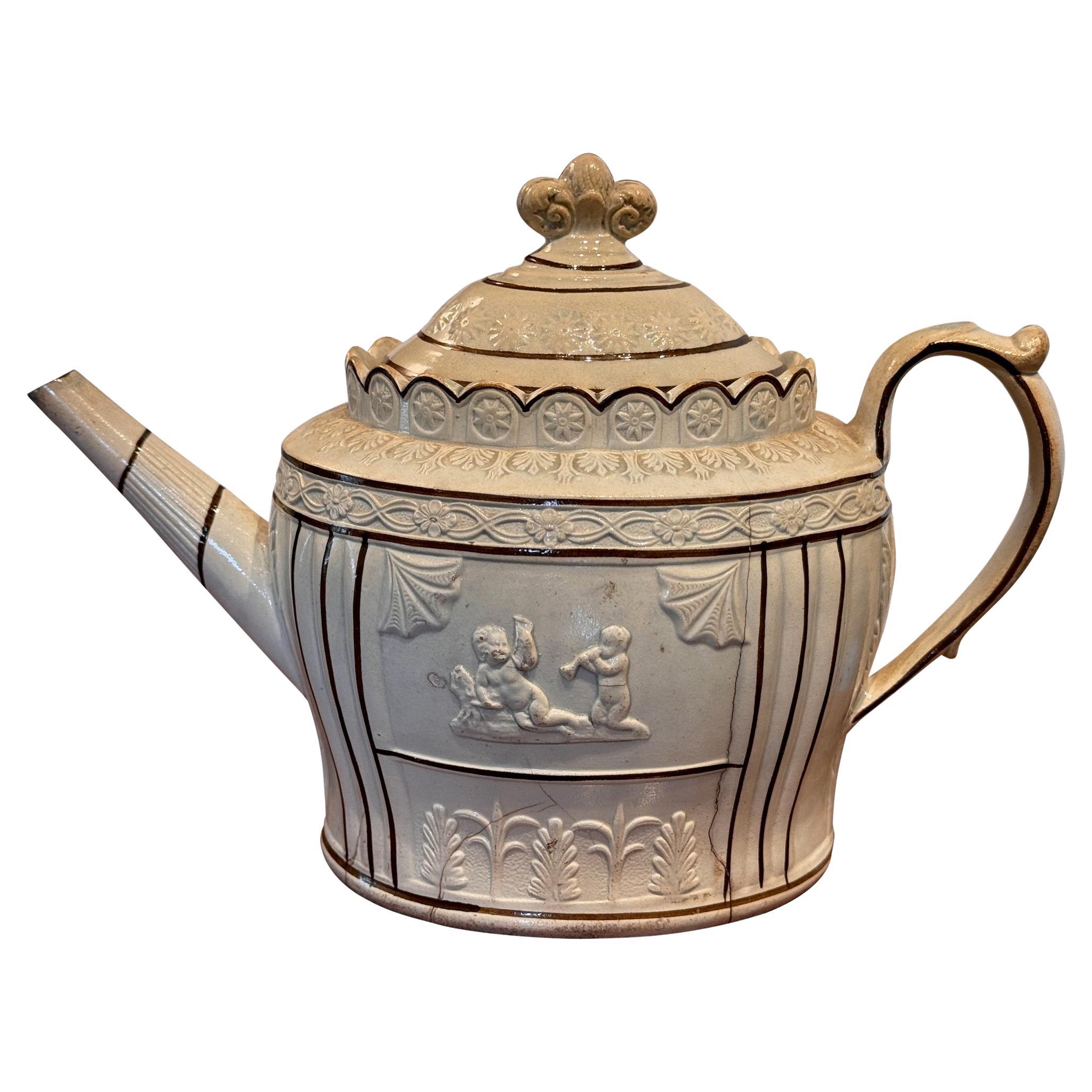Items Similar to 3 Antique 19th Century Pink Purple Lustreware Tea Coffee Cream Sugar Set
Want more images or videos?
Request additional images or videos from the seller
1 of 13
3 Antique 19th Century Pink Purple Lustreware Tea Coffee Cream Sugar Set
About the Item
Antique 19th century lustreware tea set including teapot with lid, large sugar bowl with lid and cream pitcher, all beautifully hand decorated with landscapes and buildings in iridescent pink / purple.
Dimensions:
Tea Pot - 11.25” x 6” x 6.5” / Creamer - 6.5” x 3.25” x 4.25” (Width x Depth x Height)
- Dimensions:Height: 6.5 in (16.51 cm)Width: 6 in (15.24 cm)Depth: 11.25 in (28.58 cm)
- Sold As:Set of 3
- Style:Victorian (Of the Period)
- Materials and Techniques:
- Period:
- Date of Manufacture:19th Century
- Condition:Wear consistent with age and use. Good Overall - Some light staining; gentle wear throughout.
- Seller Location:Dayton, OH
- Reference Number:
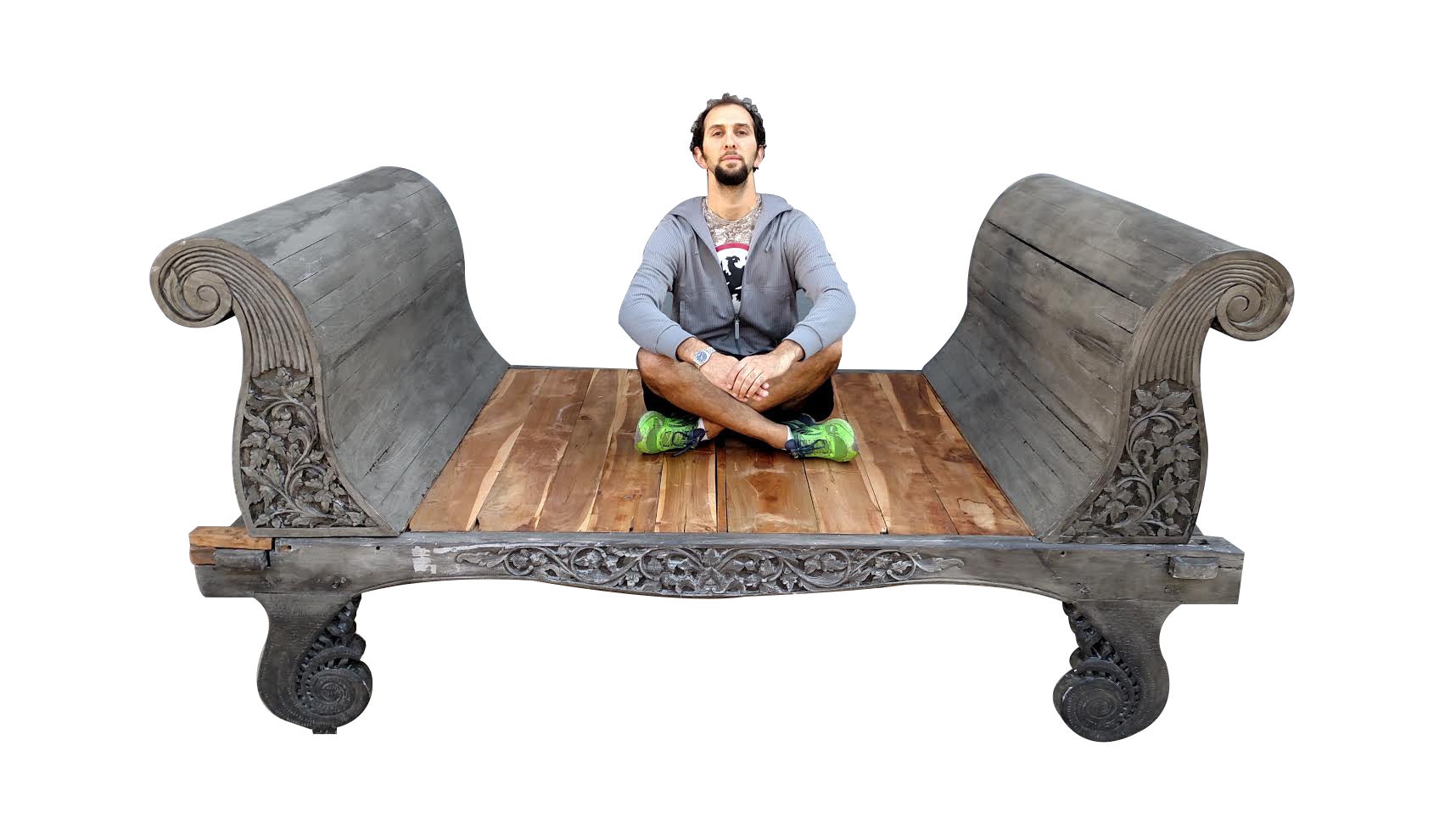
About the Seller
4.9
Platinum Seller
These expertly vetted sellers are 1stDibs' most experienced sellers and are rated highest by our customers.
Established in 2010
1stDibs seller since 2020
1,142 sales on 1stDibs
Typical response time: <1 hour
- ShippingRetrieving quote...Ships From: Dayton, OH
- Return PolicyA return for this item may be initiated within 2 days of delivery.
More From This SellerView All
- 3 Antique H. Homan & Co Pewter Tea Coffee Teapot Sugar Bowl CreamerLocated in Dayton, OH"Set of three antique pewter pieces circa late 19th century - 1880’s to early 1890’s – the set includes a teapot and lidded sugar bowl with etched flowers and floral finial, and plain creamer with floral finial. Pieces are marked Homan & Co Cincinnati 3, H. Homan IX, and Homan & Co Cincinnati IX. ""Homan Manufacturing Company was founded in Cincinnati Ohio in 1847 by Henry Homan and Asa F. Flagg as manufacturers of Britannia ware under the name Flagg & Homan. The Homan family managed the business as Homan & Co until 1887, gradually changing from the manufacture of pewter, Britannia metal and German silver to electroplated silverware. Around 1896 the name of the firm was Homan Silver Plate Company...Category
Antique 1880s Victorian Tea Sets
MaterialsPewter
- Antique English Colonial Pewter Creamer Pitcher & Sugar Bowl Serving SetLocated in Dayton, OHAntique English Colonial or Renaissance style creamer and sugar bowl set. Marked on base England with pseudo hallmark featuring a crowned shield, dragon head, lion passant, and sword...Category
Early 20th Century British Colonial Serving Pieces
MaterialsPewter
- Antique William Roger Quadruple Plate Sugar Bowl & Gorham Sterling Silver SpoonsBy William Rogers, Gorham Manufacturing CompanyLocated in Dayton, OHAntique turn of the century 13 piece sugar bowl and hanging spoon set, featuring a trophy urn style bowl with etched palm leaves on the body, brackets to support twelve sugar spoons, squirrels in the pierced handles and a sparrow shaped finial. Set includes 11 Gorham sterling silver demitasse spoons in the New Queens pattern (introduced 1895); sold by J.E. Caldwell & Co. Bowl and lid by William Rogers (cross and keystone mark, circa 1900-1910), design number 57. "Gorham Silver was founded in Providence, Rhode Island, in 1831 by Jabez Gorham, a master craftsman, in partnership with Henry L. Webster. The firm's chief product was spoons of coin silver, but also made thimbles, combs, jewelry, and other small items. In 1865, the Rhode Island legislature granted a charter in the name of Gorham Manufacturing Company. During the heyday of American silver manufacturing, approximately 1850–1940, Gorham was highly influential. The company has produced matching hollowware in both sterling and silverplate, as well as running a foundry for bronze sculpture. The White House has used Gorham silver services during many administrations including those of Lincoln, Grant, and George W. Bush. Gorham artisans also sculpted several famous statues housed in the Capitol's Rotunda, overlooking the Museum of Natural History in New York, and topping the Rhode Island State House. Gorham has also designed a number of elaborate trophies for sporting events, including the Borg-Warner Trophy for the Indianapolis 500, designed by Robert J. Hill. The company has changed hands multiple times beginning with Textron (1967), to Dansk International Designs (1989), to Brown-Forman Corporation (1991), to the Lenox Group (2005), to Clarion Capital Partners (2009), now operating under the name Lenox Corporation." "William Hazen Rogers (born May 13, 1801) was an American master silversmith and a pioneer in the silver-plate industry and whose work and name have survived to the present day. Rogers partnered with other silversmiths at times, and his company and trademarks were eventually taken over by larger companies. Rogers was born on a farm on May 13, 1801, to Sarah Reynolds (1777-?) and Asa Rogers (1798-1824). After he left home, he went on to become a silversmith, watchmaker and jeweler. From 1820 to 1825, Rogers was an apprentice to Joseph Church, a silversmith and watchmaker in Hartford. In 1825, Rogers became partners with Church and their company, Church & Rogers, initially manufactured silver-plate flatware and hollowware. He was also partner, from 1832 to 1838, with Asa Harris Rogers, his younger brother, as "A Rogers Jr. & Co." while still associated with Church & Rogers. Rogers – together with his two brothers and, later, his son – was responsible for more than 100 patterns of silver and silver-plated cutlery and serving dishes. Many of Roger's designs were influenced by Louis XIV-style patterns of the 17th and 18th century in France, and he was best known for his Elberon pattern and "Presidential" cutlery series. The companies in which one or more of the original...Category
Early 20th Century Late Victorian Serving Pieces
MaterialsMetal, Sterling Silver
- Antique 19th Century Primitive Hammered Copper Tea Pot Coffee KettleLocated in Dayton, OHAntique 19th century primitive copper tea kettle with a simple etched design on the handle. Measure: 7".Category
Antique 19th Century Primitive Tea Sets
MaterialsCopper
- 10 Pc English Hammersley & Co Rose Point Strawberry Basket Tea Serving SetBy Hammersley, Shelley PotteryLocated in Dayton, OH#38183 Vintage 10 piece serving set by Hammersley & Company. White bone china with gilded details. Set includes handled serving tray with creamer and sugar bowl in the Rose Point pattern, butter dish and lid, and five flower shaped nut dishes / coasters by Shelley England. "Hammersley & Company - The company was founded in Longton, England, in 1862. It was established as Adams, Scrivener & Co. The third owner was Titus Hammersley. After Mr. Scrivener's retirement, the company was continued by Adams and Hammersley as Harvey Adams & Co. Titus Hammersley died in 1875, and was succeeded by his eldest son, George Harris Hammersley. Finally, in 1885, Harvey Adams retired, leaving George Hammersley in charge of Hammersley & Co. His partner in the firm was Sarah Hammersley. Three years later, the management was taken over by Gilbert Hemmersley (George's brother). Later, Gilbert's sons Eric and Leslie joined the company. In 1932, the company was renamed Hammersley and Co (Longton) Ltd. They moved from the Sunderland Road Works in Longton to the Alsager Pottery. Alsager China was used as a trademark. In 1970, the company was purchased by Carborundum Limited, which merged with Royal Worcester six years later to form Royal Worcester Spode Ltd. In 1982, the Hammersley name was purchased by Palissy Pottery Ltd. However, Hammersley's Works were closed. In 1989, the Hammersley name was bought by Aynsley China, which operated until 2014, when the factory closed." "Shelley Potteries, situated in Staffordshire, was earlier known as Wileman & Co. which had also traded as The Foley Potteries. The first Shelley to join the company was Joseph Ball Shelley in 1862 and in 1896 his son Percy Shelley became the sole proprietor, after which it remained a Shelley family business until 1966 when it was taken over by Allied English Potteries. Its china and earthenware products were many and varied although the major output was table ware. In the late Victorian period the Art Nouveau style pottery and Intarsio ranges designed by art director Frederick Alfred Rhead were extremely popular but Shelley is probably best known for its fine bone china “Art Deco” ware of the inter-war years and post-war fashionable tea ware. Wileman refers to a backstamped version of which predates Shelley-branded porcelain. The factory that manufactured this brand of porcelain was located in Longton, Staffordshire, England. The origins of Shelley pottery were in the district known as Foley, at the factory of Messrs. Elkin, Knight & Bridgwood which by 1829 had a powerful steam engine and flint Mill. Knight became sole proprietor of the business in 1853 but shortly afterwards took Henry Wileman as a partner, trading as Knight & Wileman. Three years later Knight retired and Henry Wileman continued the business in his own name. In 1862 Henry Wileman employed Joseph Shelley as a travelling salesman. In 1864 Henry Wileman died and his two sons James F and Charles J took over the business. Two years later the business was split, James managed the earthenware factory whilst Charles managed the china factory. Charles Wileman retired in 1870 and James became sole proprietor of this factory. Joseph Shelley was taken into partnership with James Wileman in 1872, but only for the china factory. The company became known as Wileman & Co and used the backstamp "Foley". In 1881 Joseph's son Percy Shelley joined the company. Joseph Shelley died in June 1896, leaving Percy in sole control of the company. Notable early designers and arts directors of the company included Rowland Morris (1896), Frederick Alfred Rhead (1896), Walter Slater (ca. 1905). Shortly before the 1st World War two of Percy’s sons, Percy Norman and Vincent Bob, joined the family company. Kenneth Jack, the other son, joined as well after the war. In 1919 Eric Slater, Walter’s son joined the company. The company was still called Wileman & Co, even though it had been controlled by the Shelley family for over fifty years and on 1 January 1925 the Shelley name and trademark was registered. In the mid twenties Shelley broke with tradition and employed a well known illustrator of the time, Hilda Cowham, to produce a range of nursery ware. Cowham designed a series called Playtime; the design was a simple representation of children's activities. In 1926 Shelley introduced a second well known illustrator – Mabel Lucie Attwell. Her first six designs portrayed scenes involving children, animals and small green elves in green suits – these were called 'Boo Boos'. Another design that proved very popular during this period was the Harmony and Harmony drip ware...Category
Late 20th Century Serving Pieces
MaterialsPorcelain
- Antique Reed & Barton Silver Plate Etched Glass Cruet Condiment Caddy SetBy Reed & BartonLocated in Dayton, OHAntique Victorian Reed & Barton cruet condiment set featuring pressed and etched glass bottles with ornate footed silverplate caddy "The Reed & Barton story began in 1824, when Isaac Babbitt created a new metal alloy - "Britannia metal" - in his Taunton, Massachusetts pewter shop. Babbitt joined forces with craftsmen Henry G. Reed and Charles E. Barton to produce this innovative, higher quality pewter ware. When Babbitt encountered financial difficulties, Reed & Barton offered to take control and began manufacturing products under their own names. The company has remained privately owned by the family of Henry Reed. Besides the flatware for which it is renowned, Reed & Barton operates other brands as well: Reed & Barton Handcrafted Chests, the world's largest manufacturer of handmade chests, cigar humidors, pen chests, and hardwood flatware. Miller Rogaska Crystal...Category
Antique Late 19th Century Victorian Serving Pieces
MaterialsMetal
You May Also Like
- 19th Century R.S. Prussia Children's Tea SetBy RS PrussiaLocated in High Point, NC19th century RS Prussia incomplete child's tea set. The set includes a tray, tea to, sugar and creamer, waste bowl, 4 small cups and 3 saucers and 5 small plates. The measurements ...Category
Antique 19th Century German Serving Pieces
MaterialsCeramic
- Italian Silver Tea Set, Late 19th CenturyLocated in Los Angeles, CAItalian Silver Tea Set Late 19th Century Dimensions 25 in L x 11.8/5 in W (Tray) 8.5 in H x 11 in W x 3 3/4 in D (Teapot) 11.1 in W x 9.1/2 in H x 3.1/2 in D (coffeepot) 6 .1 in...Category
Antique Late 19th Century Italian Serving Pieces
MaterialsSilver
- Antique Victorian Sterling Silver Cream and Sugar Presentation SetBy Daniel & Charles HouleLocated in Jesmond, Newcastle Upon TyneAn exceptional, fine and impressive antique Victorian English sterling silver cream and sugar presentation set - boxed; an addition to ...Category
Antique 1870s English Victorian Sterling Silver
MaterialsSterling Silver
- Old Paris Porcelain Coffee and Tea Set, 40 Pieces, 19th Century, FranceBy Old ParisLocated in Delft, NLOld Paris porcelain coffee and tea set, 40 pieces, 19th century A white ribbed porcelain with gold paint service with a very large coffee pot, teapot, lidded sugar pot, a creamer and 18 cups and saucers Coffeepot measures 29 high, 20 cm wide and the depth is 12 (1370 gram) Teapot measures 21.5 high, 19 cm wide and the depth is 11 (808 gram) Sugar pot measures 19 high, 11 cm diagonal (540 gram) Creamer measures 21 high, 12 cm wide and the depth is 7.5 (460 gram) Cups measures 10.5 high, 7 cm diagonal And the saucers measures 3 cm high and 12.5 cm / 13.5 cm diagonal (264 gram per cups and saucers) “Old Paris” porcelain, or as the French say, “Vieux Paris” porcelain, prefers not to a single Manufacturer, but to more than thirty porcelain sources, based around Paris, from late 18th century till, circa 1870. This “Old Paris” French porcelain...Category
Antique 19th Century French Porcelain
MaterialsPorcelain
- 19th Century Wedgewood Tea PotLocated in Charlottesville, VAHere’s a little tea pot. Great as a decoration. Will not hold waterCategory
Antique 19th Century British Serving Pieces
MaterialsCeramic
- 19th Century French Tea PotLocated in Charlottesville, VAHere’s a little tea pot. This makes a great decoration.. Not for use for tea.Category
Antique 19th Century French Serving Pieces
MaterialsCeramic
Recently Viewed
View AllMore Ways To Browse
Cream And Sugar
Silver Sugar Pot
Glass Cream And Sugar Set
Antique Cream Dining Room Sets
Glass Creamer Sugar
Sugar And Creamer Glass
Silver Lidded Sugar
Creamer Sugar Bowl
Silver Sugar Bowl Creamer
Coffee Serving Set
Creamer And Sugar Bowl
Silver Sugar Bowl And Creamer
Sugar Bowl Lid
Sugar Bowl Lidded
Silver Coffee Serving Set
Sugar Bowl With Lid
Silver Sugar Bowl With Lid
Glass Sugar Bowl With Lid
